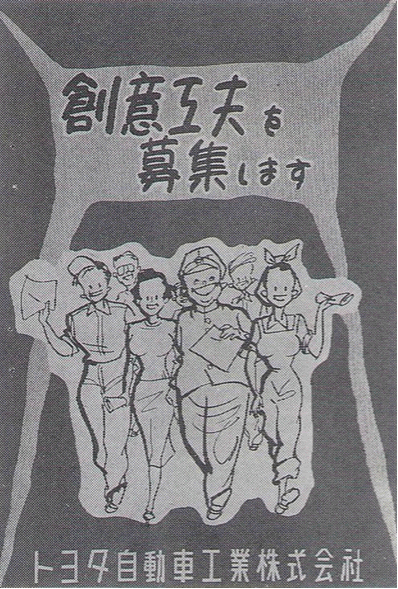Recently I suggested that GM’s bankruptcy doesn’t necessarily mean all GM managers are bad managers. Now let me present another side of the argument.
I also recently suggested in this space and elsewhere that managers have two primary tasks: (1) get the people who work for them to take the initiative to solve problems and improve their own work, and (2) align the work they do to provide value for customers and prosperity for the company. The manager gets this done by taking the initiative to learn and improve; to build processes that enable improvement and problem-solving; and to develop subordinates and others through mentoring.
Also, previously, I suggested that if we assessed GM through the LEI lens of Purpose, Process & People, we would find that “GM learned — contrary to popular opinion — quite a lot from Toyota about process.” But that wasn’t enough. For GM, “never really got very far at all into the people part, and most importantly, all along its very purpose was utterly different.”
GM managers have made great progress in improving their processes over the past ten or so years. Their failure to progress on the people front is clearly a failure of management. Does that make the managers who worked (or still work) in that system “bad managers?” I have a hard time seeing it that way. It certainly means they made bad decisions or failed to make many right or necessary decisions. I think GM’s different purpose as an organization always gets in the way. And that other purpose always profoundly impacts the way it treats its people.
Let me share an example of how the thinking about people differentiates Toyota from GM. I’ll draw, as I often do, from my NUMMI experience.
Misdirected Suggestion System
Around 1985, GM sent a lower-mid level manager to study the NUMMI/Toyota Suggestion System. Upon arrival, the researcher was excited and eager to learn about the famous Toyota process that had quickly gained traction at NUMMI. Yet, only six months later, he was despondent about his pending return to GM. “Why?” I asked. His simple explanation spoke volumes.
He had received marching orders before his dispatch: “Do not return with a system design that does not deliver at least $20 per suggestion,” he was instructed. “Why?” I asked again. “Because,” he explained, “GM had done a simple ROI analysis that showed that it cost $20 to process a suggestion. So, naturally, a suggestion must save at least $20 to pay for itself.”
By the end of his six months of study, the GM manager understood how horribly misdirected his marching orders had been. He had come to understand both the process and purpose of the NUMMI/Toyota Suggestion System. And he realized that the purpose and process are integrated elegantly with the people dimension.
He discovered a suggestion system that differed markedly from GM’s, not to mention his own expectations. Conventional suggestion systems in the U.S. are designed to encourage BIG suggestions. They give big awards, are therefore reviewed by big committees, and — another “therefore” here — are expected to generate BIG results.
Our little suggestion system at Toyota, in stark contrast, offered very small rewards. In Japan, most rewards were between 500 and 2,000 yen, or under $10 U.S. — it was a very, very big deal to receive 3,000 yen. The emphasis was on making it easy to submit a suggestion and receiving quick — very quick — feedback. Essentially immediate.
Let’s say a worker has an idea for a better way to do a certain job. All he has to do is discuss it with his team leader (and with a team leader for about every five or six workers, the team leader isn’t very hard to find), get agreement to try, and then try it. If it works, write it up and collect your 1,000 yen. If it’s a good one, you might get 2,000 yen. And then go to work thinking of your next idea, how to improve it a little more.
You’ve heard the numbers: 98% or so of suggestions are approved. The immediate, try-it-and-see, reflexive approach described above illustrates how that number is made possible. The entire process is so different from the typical suggestion system it’s hard to even think of them as the same animal. They are, in fact, not the same at all. Apples and oranges. Boys and girls (no, more different than that).
And in addition to the high acceptance rate, Toyota employees submit huge numbers of suggestions. Of course, the number of suggestions changes with geography (Japan versus the United States versus Brasil, for example) and time (2009 versus 1984 versus 1969), but for the most part, a typical production worker at Toyota submits about a suggestion per week. And did I mention that about 98% are implemented?
Here’s another of the distinguishing characteristics: the suggestions must (ordinarily) concern YOUR OWN work. No suggestions to improve the cafeteria menu, please. We’re looking for ideas to change the process you’re working on.
Major Improvements
Consider also that the typical production worker’s job may not consist of much more than a dozen or so major elements. So that means within a year or so, the worker who has submitted the average 50 or so (note: I haven’t checked the actual numbers lately) suggestions will have had the opportunity to make major changes in his job.
By the way, for young office staffers like myself, the target was for each person to submit one implemented suggestion per month. I really had a hard time with it. While the suggestion needed to be “about” my own work, it couldn’t be something that I was doing as part of (or in the normal course of) my work. So, if I were delivering a certain training course as part of my job responsibility, I would not write a suggestion to respond to routine daily occurrences such as trainees’ forgetting to bring their name tag back with them each day. On the other hand, if I came up with a poka-yoke to collect the name tags each day before the trainees left the room, that would be a process (standard work) change that could qualify as a small suggestion. (That one would be lucky to get even the smallest monetary award!)
Now, back to the disillusioned young GM manager. He knew, he told me, that GM would never even understand, much less approve such a system. But, he understood that the secret was that Toyota wasn’t buying cost reduction ideas with its suggestion system; Toyota was seeking the engagement of the workers.
Toyota got the idea for its suggestion system directly from Ford. In 1950, Eiji Toyoda spent six weeks learning from Ford, including important time at the River Rouge Plant. It was there that he saw Ford’s suggestion system and returned to Toyota with a pamphlet that explained it. Eiji knew that deep engagement in kaizen by his workforce in Toyota City would be key to achieving the major improvements his company required. So, upon his return to Japan, Eiji instituted Toyota’s “Creative Ideas and Suggestion System’ as a direct copy of the suggestion system he saw at Ford.
In Eiji’s words: “The suggestion system is something that I saw at Ford and simply copied back home at Toyota. You start with a lot of curiosity, you put a system in place, and you let your people take it from there.”
“I got a copy of the pamphlet that they were using at Ford, and we put that into Japanese to imitate the system at Toyota. But when I visited Ford later, they told me that they had stopped using the suggestion system; that it didn’t work.”
Below is a copy of the first poster soliciting suggestions for the new program that Eiji copied from Ford, with the slogan, “Recruiting creative ideas!”

So, if the failure of managers to embrace the people side of lean is illustrative of the ultimate failure of old GM, it is ironic that the inspiration for Toyota’s suggestion system — perhaps the most tangible illustration of how Toyota taps into the creative talents of its people — came from GM’s old backyard.






